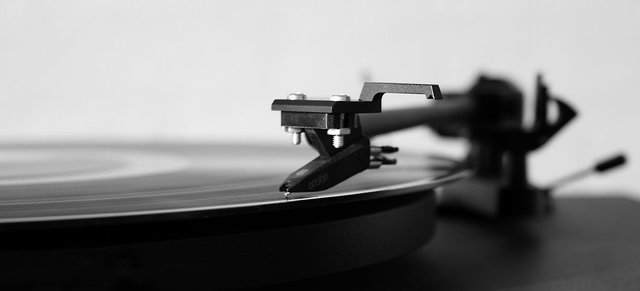Understanding Your Favorite Songs: Song Form Made Easy + Analysis (Fast Music Theory #8)
Most people's exposure to music is through song, which is, in general terms, a window of time in which intentional sound happens. Songs tend to move through different moods as they progress to create bits of drama. Some songs are created to perform specific functions: telling a story, making people dance, or making people feel less alone in a belief. Understanding the typical anatomy of a song will help you quickly memorize them, make your own, and communicate effectively with other musicians and music lovers.

-Flea
A song is literally “a short poem or other set of words set to music or meant to be sung,” though this definition is a bit too specific for the way we use the word today. In modern times, people use the word to refer to any development or progression of musical ideas for a set amount of time. Imagine if a book didn’t have chapters or paragraphs; hundreds of pages, cover to cover, of words flowing through essentially the same progression of story and description but without an obvious separation of themes. Segmentation of ideas makes a book digestible and organized as it sits in our minds. Most songs do the same to stay interesting, organized, and intuitive.
Song Form
Let’s examine the sections that make up a song. We’ll start with popular music song form.
We’ll start here, because it is usually the most memorable part of the song by design. The history of the chorus may begin in European-based churches, where it referred to a large choir or the whole congregation singing together during a service. Opera often employed the use of a choir, called a chorus, to represent the townspeople or populace of a given story. The word chorus implies “everybody sings,” which is why the chorus of modern music is intended to be simple, catchy, and memorable. Many artists and producers make their choruses much more climactic in hopes of catching a wanderer’s attention, either by making it stronger or by raising the pitch of the melody.
The verse may also have its origins in the churches of Europe. During a service, “verses” of religious text were read aloud by an individual between the chorus’s singing. In modern music, the verse typically carries the bulk of the lyrics and has more variation. Verses also tend to have the same melody within a song (with slight variation) while changing the lyrics.
This one is tricky. Modern usage of this word suggest that the bridge is any section of the song that isn’t a chorus or a verse. My guess is that the bridge is supposed to bridge one section of a song to another, but this is a quality that every section of a song shares as long as the song doesn’t begin or end with it. Vagueness aside, the bridge is usually climactic or in deep contrast with the narrative and tone of the other sections.
Sometimes a verse is connected to a chorus by a section that doesn’t vary like the verse does, but isn’t as grand or catchy as the chorus. This section is aptly called the pre-chorus and often serves to connect the contrasting feelings of a verse and chorus.
Short for introduction, though few people actually say the whole word. The intro is a musical introduction to the song, usually moving into the first verse. Often, the intro is built musically out of some other part of the song, such as the chords to the verse or chorus. Other times it introduces a theme that occurs later. Not every song has an intro; occasionally a song will launch immediately into the first verse or chorus.
Short for the made up-word “outroduction,” outro is the opposite of intro and occupies the end of the song when present.
Hook is sometimes synonymous with chorus. Sometimes it is the label given to the single catchiest part of the song, whether it be a lyrical moment, or a guitar riff, or any other quotable musical moment. Sometimes the hook is its own separate section designed to get stuck in the listener’s head.
A tag isn’t so much a section of a song as it is a musical behavior. Often, an important fragment of melody or harmony will be repeated, sometimes many times in a row, to signify the end. I like to add them to my song form list because I think they’re fun to notice.

Listen...
Keep in mind that songwriters are constantly playing with our expectations of these terms. Sometimes verses and choruses are joined together in strange ways. Sometimes the pre-chorus and chorus could just be considered two different choruses. Sometimes a guitar solo section is just the verse without the singer. Try to identify some of these sections the next time you’re listening to music. All in all, these terms are not objective and are completely dependent on who you’re talking to or working with. Sometimes musicians will label a part of a song by its defining features, such as “the fast part,” or “the part with the key change,” and so forth. Be ready to stay fluid during these types of conversations.
There are less subjective ways to label parts of a song. This whole verse-chorus business can be avoided simply by labeling the sections with letters, giving us the A section, B section, etc... This is a good way to go if communication is becoming unclear, or if the composition is more complex. For example, music that is not lyrically driven, such as orchestral music or certain types of jazz, are labeled this way to avoid confusion.
/// Examples ///
Now that we understand the names of these different parts, we can take something that previously existed as just 180 seconds of sound and turn it into something writeable and easier to memorize. Here are some examples... Take a listen and see if you can follow along.
- Intro
- Verse 1
- Chorus
- Verse 2
- Chorus
- Instrumental verse x2
- Verse 3
- Chorus
From here, we can figure out the time signature, count beats, and assign a number of measures to each section. This gets us a nice read on the layout.
- Intro - 12 measures
- Verse - 12 measures
- Chorus - 12 measures
Fancy that. Every section is the same number of measures. We can also figure out (or look on the internet for) the chords for each section. It turns out the sections of this song are all the same harmonically! A capitalized letter denotes a major chord.
Bb - Eb - Bb - F - Bb
Now that we know the chords and timing of each section along with the overall layout of the entire song, we can effectively memorize and play them on any instrument that we feel proficient on. This knowledge of how a song is structured lasts a lot longer in our memories than just the muscle memory of playing a song and has the added benefit of making transposition to another key much easier.
Let’s try a song from a billboard #1 album.
- Intro
- Verse 1
- Pre-chorus
- Chorus
- Verse 2
- Pre-chorus
- Chorus
- Alternate chorus
- Verse 3
- Bridge (no percussion)
- Chorus x2
- (Tag)
It looks formulaic, but the song manages to keep developments happening throughout. The alternate chorus has a slightly different chord progression to keep things interesting. Different sections change the instrumentation for dramatic effect. The tag repeats the line “We could’ve had it all” at the very end. I like to put some details down so I can remember. Now I can tag each section with its chords. ( :| means repeat.)
- Intro - Cm
- Verse - Cm, Gm, Bb, Gm, Bb :|
- Pre-chorus - Ab, Bb, Gm, Ab | Ab, Bb, Gm, G Chorus - Cm, Gm, Ab :|
- Alternate Chorus - Ab, Bb, Cm, Bb, Ab, Bb
If I really want to get fancy and prepared, I can count all of the measures in each section.
- Intro - 2 measures
- Verse - 16 measures
- Pre-chorus - 8 measures
- Chorus - 8 measures
- Bridge - 8 measures
I can then make this into a big organized list separated by section, but I don’t usually need to. Remember that we’ve been hearing songs, whether intentionally or not, our whole lives. You intuitively pick up a lot more when you hear a song than you may think. Once written, you’ll probably already have it memorized. With enough practice, you’ll be able to do this in your head, effectively reducing a 228-second experience into a small memorizable list. This is also great for recall — I can’t accurately play a song memorized with muscle memory after a couple of years, but I can remember the chords to most songs that I’ve used this process on.

this is music My favorite. If you wish to allow me to share your post
Thanks! I'd love for you to share it.